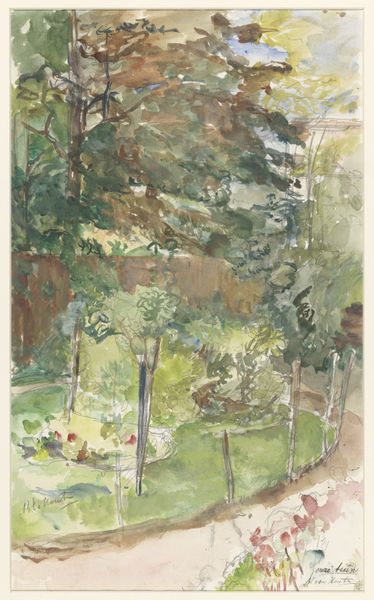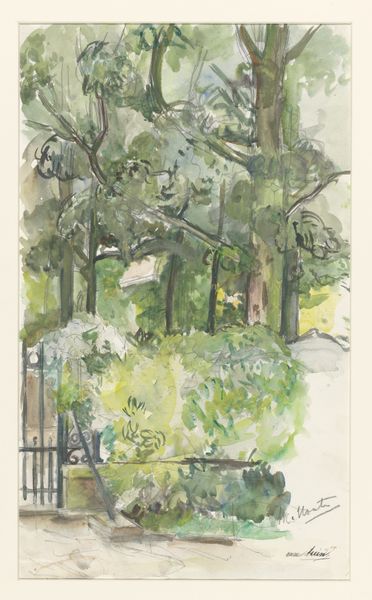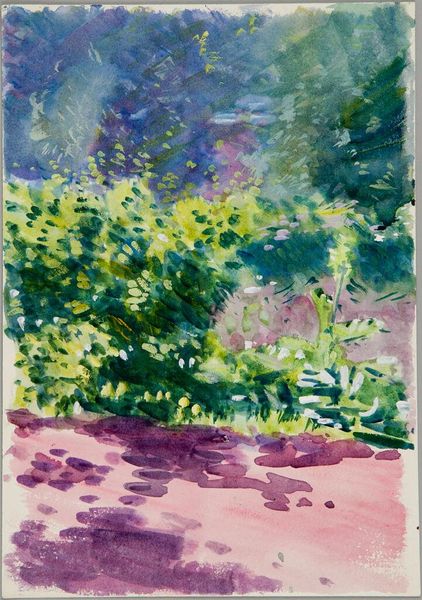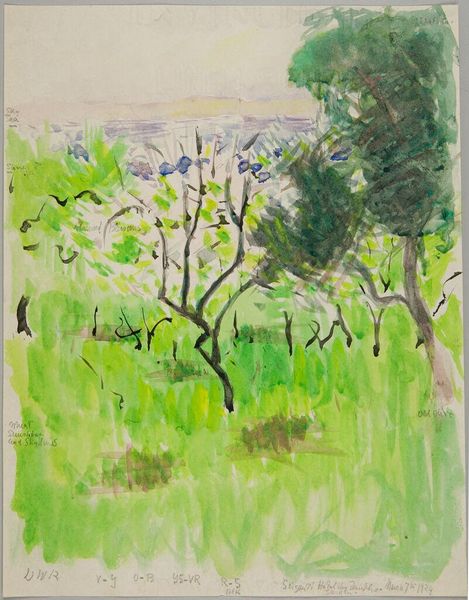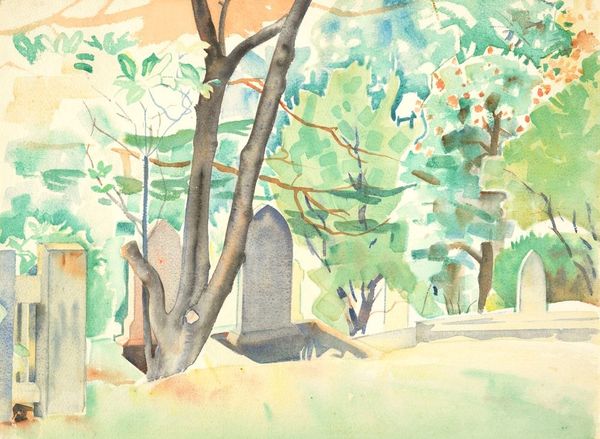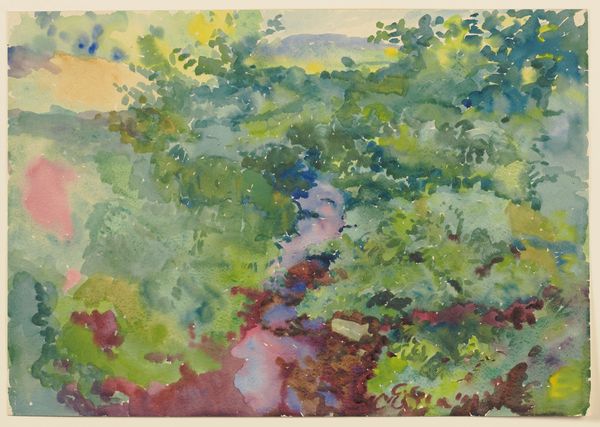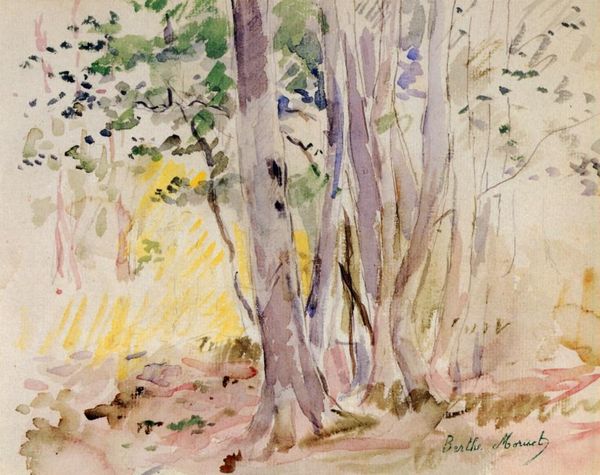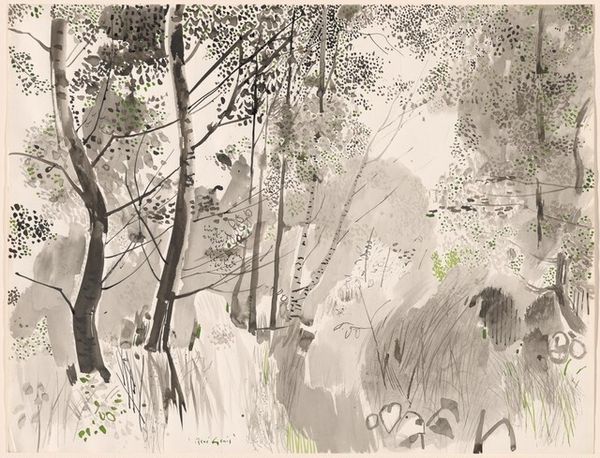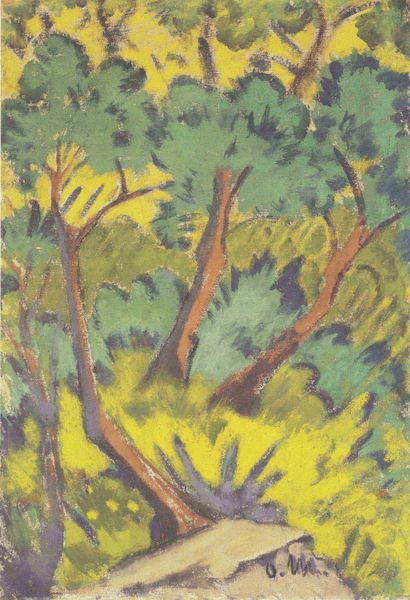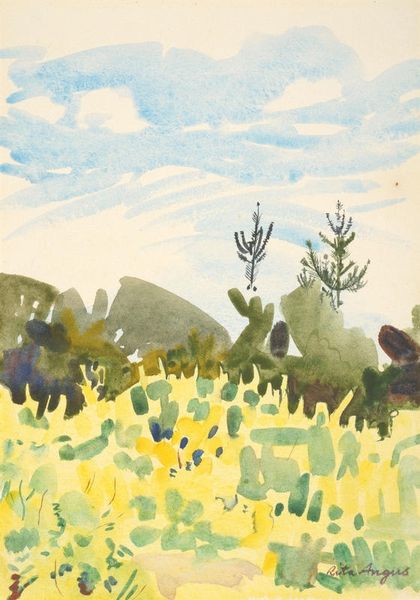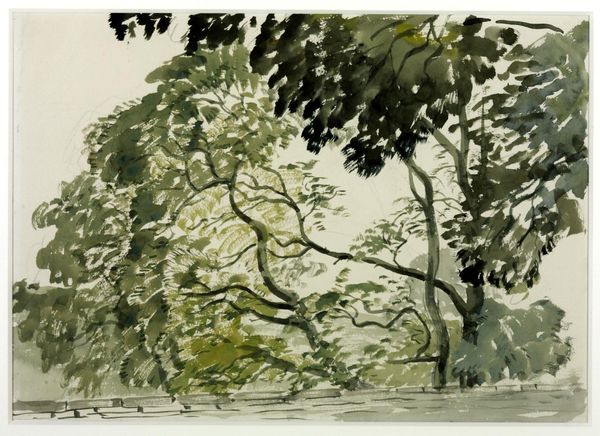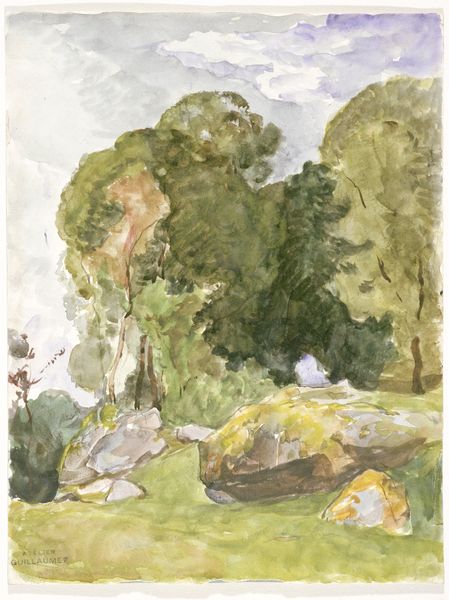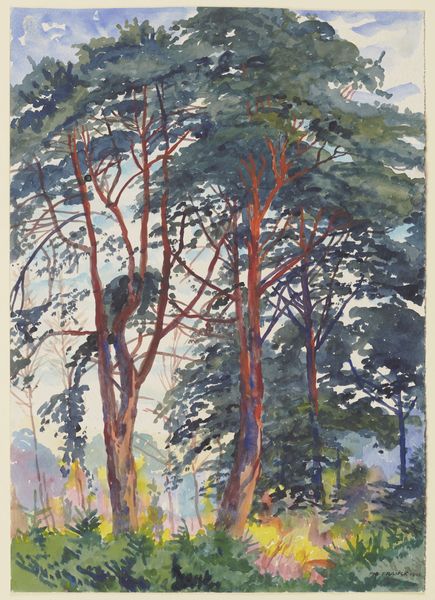
Dimensions: 129 mm (height) x 92 mm (width) (bladmaal)
Curator: Welcome. Today, we’re looking at John Christensen's 1938 watercolor and painting, “Guldregn i en have,” or "Golden Rain in a Garden," housed here at the SMK. Editor: Immediately striking is how fluid the light is. It really dances across the whole piece, giving it a lively yet calming atmosphere. Curator: It's interesting to consider this artwork within the broader context of Scandinavian Impressionism. Christensen, while not as widely recognized as some of his contemporaries, was part of a generation exploring new modes of expression, even outside of established art centers. This painting style became fashionable when the Nazi party declared modernism as degenerate. Editor: Absolutely, the technique itself, the quick, light strokes, perfectly complements the chosen subject matter. Note how Christensen builds form with color rather than relying on strong outlines. Curator: The plein-air aspect is critical here; painting outdoors directly links to broader movements exploring man's connection to the environment, particularly as urban centers expanded. Capturing transient light conditions would have allowed this particular painting to flourish given external limitations. Editor: I agree. Also, the eye is drawn around the composition through color echoes, linking the foreground and background and thus establishing a dialogue between various textures, creating a harmonious whole. Curator: While Christensen seemingly lacked engagement with overt political or social commentary, paintings of gardens themselves speak volumes. In an age of industrialisation, the private garden would function almost as an arcadian refuge, and an artwork would serve as visual representations of an imagined peaceful domesticity. Editor: Well, viewing it with this in mind adds so many layers of meaning to the purely visual qualities. The light truly sings given these cultural and political layers of its time. Curator: Ultimately, an exploration like this illuminates art’s ability to function both independently, through composition, and interdependently, as evidence of culture. Editor: Precisely. It highlights how art provides multiple points of entry depending on how one chooses to look.
Comments
No comments
Be the first to comment and join the conversation on the ultimate creative platform.
